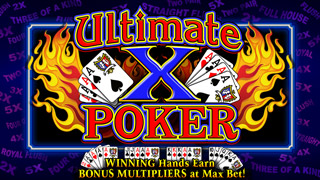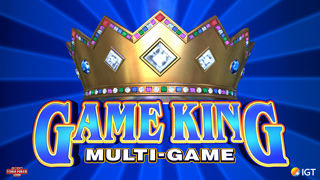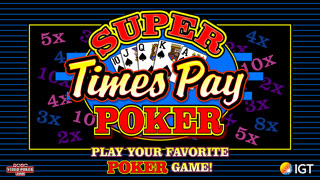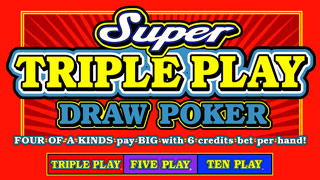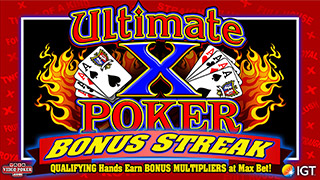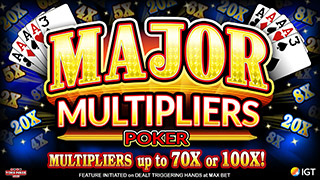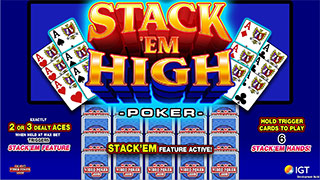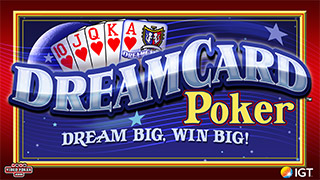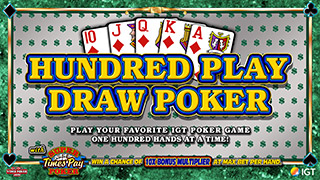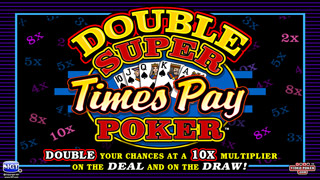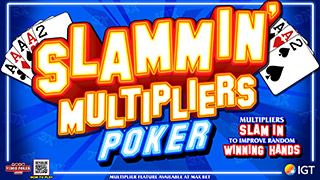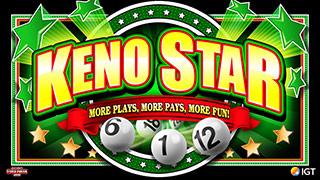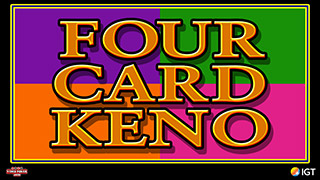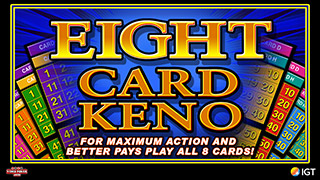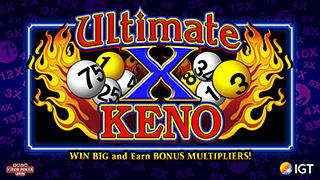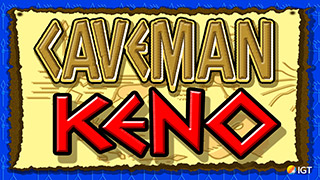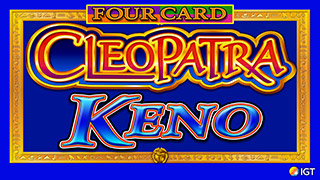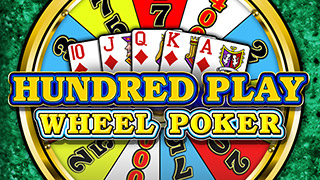single machine prog
-
patlives
- Forum Rookie
- Posts: 26
- Joined: Wed May 27, 2009 9:38 pm
single machine prog
Ok I have found 12 machines at a casino with progressives on various hands, and I'm trying to decide which of them to play. Each machine is its own progressive, they are not linked to any other machines in the casino. The game I am playing is NSUD, the machines have a prog for 4 deuces and for the royal. Should I play the machines that have a higher prog for the deuces or for the royal?? I am thinking deuces because it is easier to hit. Or should I add the two overages together and play that one? In checking all 12 the biggest royal prog i found was 4300 and the largest Deuces prog was 1050. What do you guys think?These machines also have DDB and DB. The DB has progs for Royal and 4 aces. The DDB has progs for Royal, A'swk, 2-4wk, and aces. How would you decide on those, when none of the progs are huge, but some bigger than the machines around them on different things. Thanks for your help!!
-
New2vp
- Video Poker Master
- Posts: 1878
- Joined: Mon Sep 11, 2006 4:02 am
A simplified rule of thumb to determine which of multiple NSUD machines to play would be:8 x Deuce overage + 1 x RF overage, call this 8d + rThat means your observation of a 1050 Deuce machine is more valuable than a 4300 RF machine (if the other meters are at reset). That is because:[8 x 50 = 400] > [1 x 300 =300]It is not exact, but if you have 8d + r > 587, the game will generally be worth more than 100%.You can find similar formulae for other games if you completely specify the base game pay schedule.If your DB base game was 9-7, a formula like 8.7a + r > 1763 would usually get you over 100%. When comparing which DB game is the best to play, using 8.7 x the quad ace overage to compare to the RF overage will generally get you the best machine to play.For a DDB that was 9-6 with the 4 meters that you indicate, the breakeven formula is6.3a + 5.2ttf + 2.4ak + rf > 1847 (a = quad ace overage, ttf = quad 2-4 + kicker overage, ak = quad ace + kicker overage, rf = royal flush overage).And again you can use those coefficients to compare DDB 4-meter games with differing meter values.If you are going to play the games at the reset values, then you might need slightly different coefficients. The numbers listed are ratios of the overages that are necessary for each meter individually to get the game EV to breakeven if the other meters are at reset.When comparing different games with different meters, you need to take into consideration the different base EVs. That story is for another post.
-
patlives
- Forum Rookie
- Posts: 26
- Joined: Wed May 27, 2009 9:38 pm
That is AWESOME!!!!!!!!!!! Thank you so much, I am going back on Saturday, this time with the calculator on my phone at the ready!!! You were accurate with the db and ddb pay schedules, 9/7 and 9/6. Great stuff!
-
patlives
- Forum Rookie
- Posts: 26
- Joined: Wed May 27, 2009 9:38 pm
Just emailed your post to my VP buddy, he agrees with me, absolutely brilliant!
-
BillyJoe
- Video Poker Master
- Posts: 3198
- Joined: Sat Aug 23, 2008 2:00 pm
That is AWESOME!!!!!!!!!!! Thank you so much, I am going back on Saturday, this time with the calculator on my phone at the ready!!! You were accurate with the db and ddb pay schedules, 9/7 and 9/6. Great stuff!
Just remember, no fair crying when the machine next to you hits an RF for someone else. VP is random, after all.
-
Tomcat1569
- Senior Member
- Posts: 252
- Joined: Tue Feb 23, 2010 1:43 am
A simplified rule of thumb to determine which of multiple NSUD machines to play would be:8 x Deuce overage + 1 x RF overage, call this 8d + rThat means your observation of a 1050 Deuce machine is more valuable than a 4300 RF machine (if the other meters are at reset). That is because:[8 x 50 = 400] > [1 x 300 =300]It is not exact, but if you have 8d + r > 587, the game will generally be worth more than 100%.You can find similar formulae for other games if you completely specify the base game pay schedule.If your DB base game was 9-7, a formula like 8.7a + r > 1763 would usually get you over 100%. When comparing which DB game is the best to play, using 8.7 x the quad ace overage to compare to the RF overage will generally get you the best machine to play.For a DDB that was 9-6 with the 4 meters that you indicate, the breakeven formula is6.3a + 5.2ttf + 2.4ak + rf > 1847 (a = quad ace overage, ttf = quad 2-4 + kicker overage, ak = quad ace + kicker overage, rf = royal flush overage).And again you can use those coefficients to compare DDB 4-meter games with differing meter values.If you are going to play the games at the reset values, then you might need slightly different coefficients. The numbers listed are ratios of the overages that are necessary for each meter individually to get the game EV to breakeven if the other meters are at reset.When comparing different games with different meters, you need to take into consideration the different base EVs. That story is for another post.
New2vp, Great info and stats. How would this apply to a 7/5 BP 25-cent progressive like the one I hit at Bally's LV the other day, with a top suited royal in clubs at $1,785? The other suits were all in the $1,150 to $1,400 range. Fortunately I hit the club royal. I would not normally have played this progressive as hard as I did without a combination of comps and a separate promotion working for me, which I figured added close to 1% to a 98% game (not including the RF premium).
-
patlives
- Forum Rookie
- Posts: 26
- Joined: Wed May 27, 2009 9:38 pm
You bet, but I love knowing that I am getting the best run for my money. Here's the beauty of it, since they are all individual progressives, the bank won't empty when someone hits the royal
-
New2vp
- Video Poker Master
- Posts: 1878
- Joined: Mon Sep 11, 2006 4:02 am
New2vp, Great info and stats. How would this apply to a 7/5 BP 25-cent progressive like the one I hit at Bally's LV the other day, with a top suited royal in clubs at $1,785? The other suits were all in the $1,150 to $1,400 range. Fortunately I hit the club royal. I would not normally have played this progressive as hard as I did without a combination of comps and a separate promotion working for me, which I figured added close to 1% to a 98% game (not including the RF premium).
patlives' question involved selecting the best machine when there were multiple meters on hand types that had significantly differing probabilities of hitting, so that you needed a coefficient different than 1 to equate the effects of one overage with another.Although you have 4 meters, the chances of hitting any one of them are roughly the same, so the easy answer is just take the average of the 4 meter values and use that average to determine which machine to play (and what the approximate EV would be).There's a rule of thumb that says you can add 0.1% to the EV for each increase of 200 coins in a royal flush. Here if you use the average of the four overages, you can actually add a bit more than 0.1% for each 200 coins.For the example below, the probabilities for hitting a royal range from 0.0000065 to 0.0000076 in each of the 4 specific suits (0.0000279 for summing up those 4 probabilities). Comparing this to patlives' example, we could use coefficients of 1.09, 1.01, 0.98, and 0.92 for the 4 suits, but these numbers are so close to one, there's not much reason to worry about using coefficients other than one. It's hard enough for most just to add the 4 meter values together (or to simply take a rough average).You can find the breakeven value of a royal flush (or any hand type) through trial and error with most video poker software. Or, there is a slightly quicker method if you're decent with a spreadsheet by successively estimating how much the value has to change to get you exactly to 100% (or some other percentage, taking into consideration comps). Usually that takes only 3 or 4 iterations. For the less adventurous, I think Dan Paymar's new software calculates breakeven royal flush values (and strategies) for a single royal flush meter. A great free resource to find out the breakeven royal flush values is: http://www.videopokerhelp.net/condensed-prog.htm . There you can see that the breakeven rate for 7/5 quarter BP is $1881 or 7524 coins.Averaging the 4 suits does not get you exact figures, but they are close enough for most of us. If I add to your example for that 4th suit, using $1785, $1400, $1275, and $1150, an average of $1402.50, and using the same strategy for all 4 suits, I will get an EV of 98.86%. If you average the four EVs, which would necessitate using different strategies based on the suits when you hold the royal cards, you could improve on that, but just slightly; it would be 98.88%. Occasionally, you might find a few different max-EV plays if you spent even more time scouring the strategy tables, but your gain would be minuscule and largely imperceptible, possibly getting you an extra ten-thousandth of a percent or two.
-
Tomcat1569
- Senior Member
- Posts: 252
- Joined: Tue Feb 23, 2010 1:43 am
Thanks again, new2vp. I see my rough estimate wasn't all that far off. With comps and another promo simulataneously in play, this appears to have been better than a full-pay 9/6 JOB game at around 99.8%. Obviously this wasn't an AP situation, but close enough to warrant play for me here.
-
Tedlark
- Video Poker Master
- Posts: 8769
- Joined: Mon Oct 02, 2006 12:29 am
[QUOTE=patlives]That is AWESOME!!!!!!!!!!! Thank you so much, I am going back on Saturday, this time with the calculator on my phone at the ready!!! You were accurate with the db and ddb pay schedules, 9/7 and 9/6. Great stuff!
Just remember, no fair crying when the machine next to you hits an RF for someone else. VP is random, after all.
[/QUOTE]
Just play both machines then.



